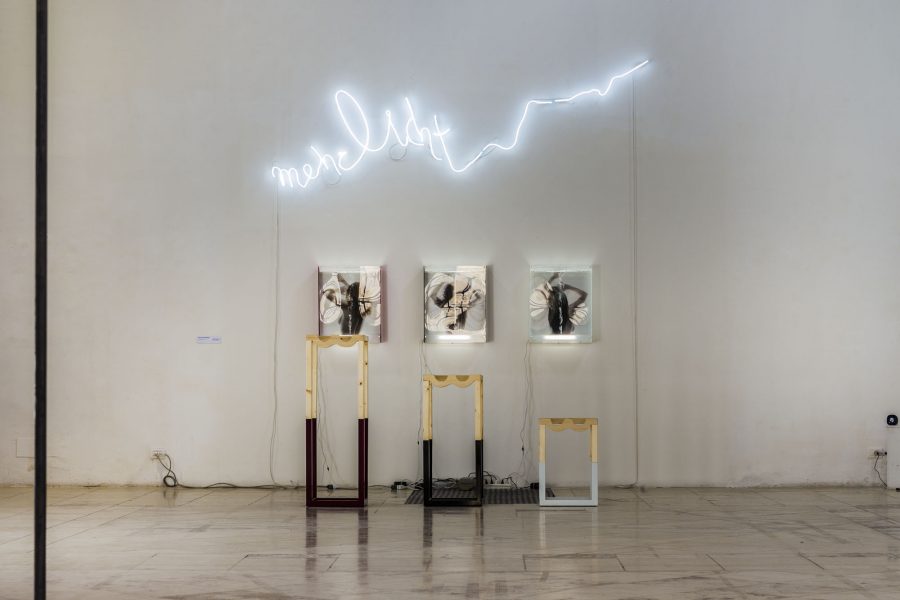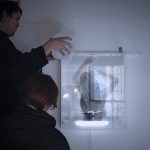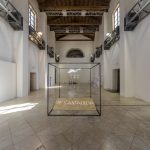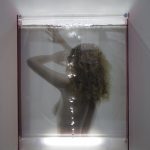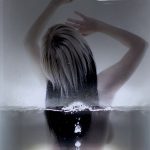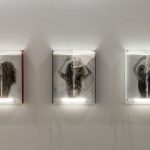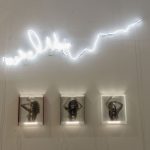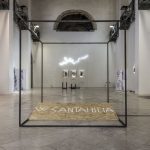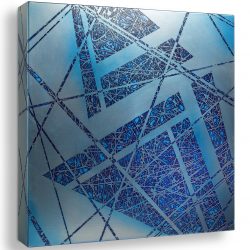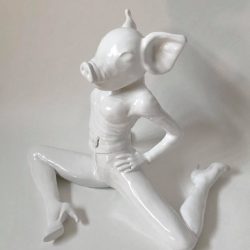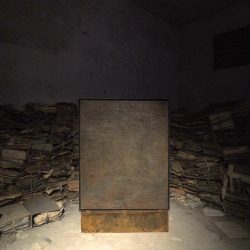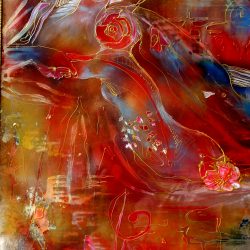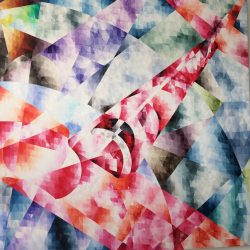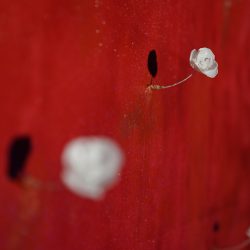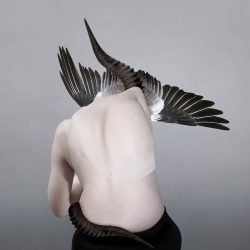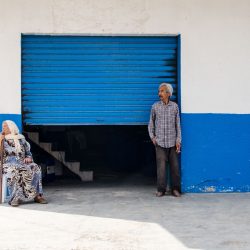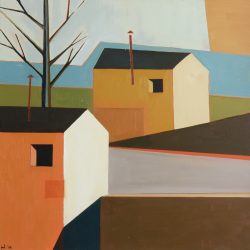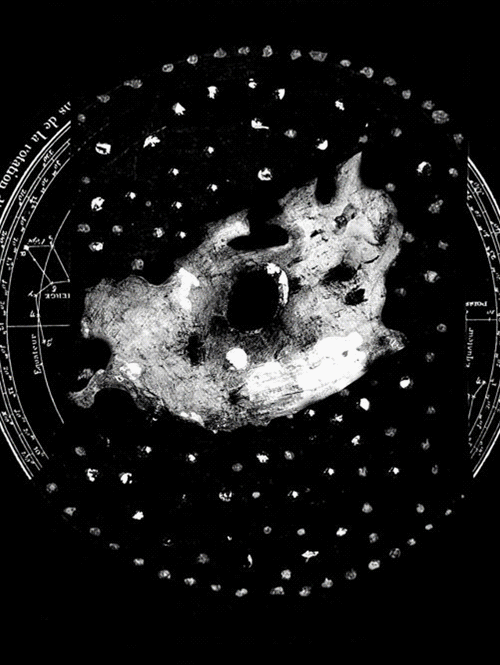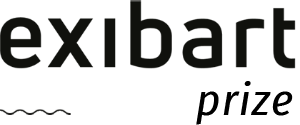work
W SANTA LUCIA (LA SUA LUCE È NELL’OMBRA)_GALLERIA CIVICA D’ARTE CONTEMPORANEA MONTEVERGINI, SIRACUSA
| category | Installation |
| subject | Human figure, Abstract, Architecture |
| tags | suono, acqua, luce, light |
| base | 0 cm |
| height | 0 cm |
| depth | 0 cm |
| year | 2015 |
W SANTA LUCIA (LA SUA LUCE È NELL’OMBRA)_GALLERIA CIVICA D’ARTE CONTEMPORANEA MONTEVERGINI, SIRACUSA
The Montevergini Civic Gallery hosts the work W Santa Lucia, in which the LED writing, visible from via S. Lucia alla Badia, reproduces the phrase pronounced during the celebrations of the Saint in Syracuse every 13 December. The position of the luminous writing on a wooden base lies like the body of the Saint in the work The Burial of Saint Lucia by Caravaggio where the painter portrays the Saint as an ordinary woman who is killed under the eyes of the Church and the State. On this occasion an ideal altar was created for Caravaggio's painting, in which the body of the Saint lying on a plywood table supporting a cubic iron structure becomes light. The cube is loaded with mystical and religious meanings, it indicates static nature, permanence and refers to sacred enclosures and stands as a symbol of definition and delimitation of what is formless and chaotic in nature. The symbologies of the Square and the number four are associated: Four represents divine perfection, the stabilized world, fully developed manifestation. The Square and the Cube represent the terrestrial perfection, as the Circle and the Sphere represent the celestial one; the human dimension is therefore linked to the divine one, like the earthly to the celestial.
A lightbox filled with water on the right side of the entrance contains a photo of a woman naked to the torso and glowing neon from her eyes. The title of the work Light of my eyes, a commonly used expression and the gesture of hiding the eyes, create a short circuit in the relationship between the word and the image, contained in the lightbox. The woman, a postmodern Saint Lucia, real in her carnality, presents a sacred aspect given to her by the light. The light element has always been linked to a biological idea of necessity and is presented here in its multiple meanings: it can give us life but in its absence it can lead us to death.
At the back of the room, a neon sign Mehr Licht, "more light", the phrase that Wolfgang Goethe pronounces on his deathbed, flashes on three light boxes filled with water. Each lightbox contains a photo of a naked woman from behind looking towards the light. Here the double positive and negative value of light is shown, which can illuminate, blind, distract, or offer a glimmer of salvation, it can show the world but it can also hide it. The women look towards the light, they are enveloped in it, dazzled, almost blinded; the structure of the triptych refers to a symbolic and religious meaning. The number three presents itself as a resolution of the dualistic concept, it represents unity, synthesis. The elbow rests in front of each lightbox, of three different heights, correspond to three different levels of spirituality of the viewer and with an ascent and descent movement represent human life. The artist invites the viewer to position himself in front of the work to make a choice through a gesture, to pause to observe and reflect. The material in which the elbow rests are made, half iron half wood, represent the synthesis of the two dimensions, earthly and spiritual, which are compared: different, opposite dimensions, but in reciprocal exchange. The moment of reflection is disturbed by a looped sound composition.
On the sides of the room, two lightboxes positioned one in front of the other, contain photos that are developed in negative, dark/light opposition with inverted roles: the white color actually corresponds to black and the colored trails correspond to light. Here life is conceived as a forest in which the light can be filtered by the trees or in which one can fall into darkness. The sparks of light emerge from the background, almost like biomorphic shapes and become the guide for an unknown path. Investigating the theme of sight, we are reminded that darkness exists and that there are different ways of seeing light
Installation and performance - sound, iron, light box, neon, wood, water, led, pcv
The Montevergini Civic Gallery hosts the work W Santa Lucia, in which the LED writing, visible from via S. Lucia alla Badia, reproduces the phrase pronounced during the celebrations of the Saint in Syracuse every 13 December. The position of the luminous writing on a wooden base lies like the body of the Saint in the work The Burial of Saint Lucia by Caravaggio where the painter portrays the Saint as an ordinary woman who is killed under the eyes of the Church and the State. On this occasion an ideal altar was created for Caravaggio's painting, in which the body of the Saint lying on a plywood table supporting a cubic iron structure becomes light. The cube is loaded with mystical and religious meanings, it indicates static nature, permanence and refers to sacred enclosures and stands as a symbol of definition and delimitation of what is formless and chaotic in nature. The symbologies of the Square and the number four are associated: Four represents divine perfection, the stabilized world, fully developed manifestation. The Square and the Cube represent the terrestrial perfection, as the Circle and the Sphere represent the celestial one; the human dimension is therefore linked to the divine one, like the earthly to the celestial.
A lightbox filled with water on the right side of the entrance contains a photo of a woman naked to the torso and glowing neon from her eyes. The title of the work Light of my eyes, a commonly used expression and the gesture of hiding the eyes, create a short circuit in the relationship between the word and the image, contained in the lightbox. The woman, a postmodern Saint Lucia, real in her carnality, presents a sacred aspect given to her by the light. The light element has always been linked to a biological idea of necessity and is presented here in its multiple meanings: it can give us life but in its absence it can lead us to death.
At the back of the room, a neon sign Mehr Licht, "more light", the phrase that Wolfgang Goethe pronounces on his deathbed, flashes on three light boxes filled with water. Each lightbox contains a photo of a naked woman from behind looking towards the light. Here the double positive and negative value of light is shown, which can illuminate, blind, distract, or offer a glimmer of salvation, it can show the world but it can also hide it. The women look towards the light, they are enveloped in it, dazzled, almost blinded; the structure of the triptych refers to a symbolic and religious meaning. The number three presents itself as a resolution of the dualistic concept, it represents unity, synthesis. The elbow rests in front of each lightbox, of three different heights, correspond to three different levels of spirituality of the viewer and with an ascent and descent movement represent human life. The artist invites the viewer to position himself in front of the work to make a choice through a gesture, to pause to observe and reflect. The material in which the elbow rests are made, half iron half wood, represent the synthesis of the two dimensions, earthly and spiritual, which are compared: different, opposite dimensions, but in reciprocal exchange. The moment of reflection is disturbed by a looped sound composition.
On the sides of the room, two lightboxes positioned one in front of the other, contain photos that are developed in negative, dark/light opposition with inverted roles: the white color actually corresponds to black and the colored trails correspond to light. Here life is conceived as a forest in which the light can be filtered by the trees or in which one can fall into darkness. The sparks of light emerge from the background, almost like biomorphic shapes and become the guide for an unknown path. Investigating the theme of sight, we are reminded that darkness exists and that there are different ways of seeing light
Installation and performance - sound, iron, light box, neon, wood, water, led, pcv



